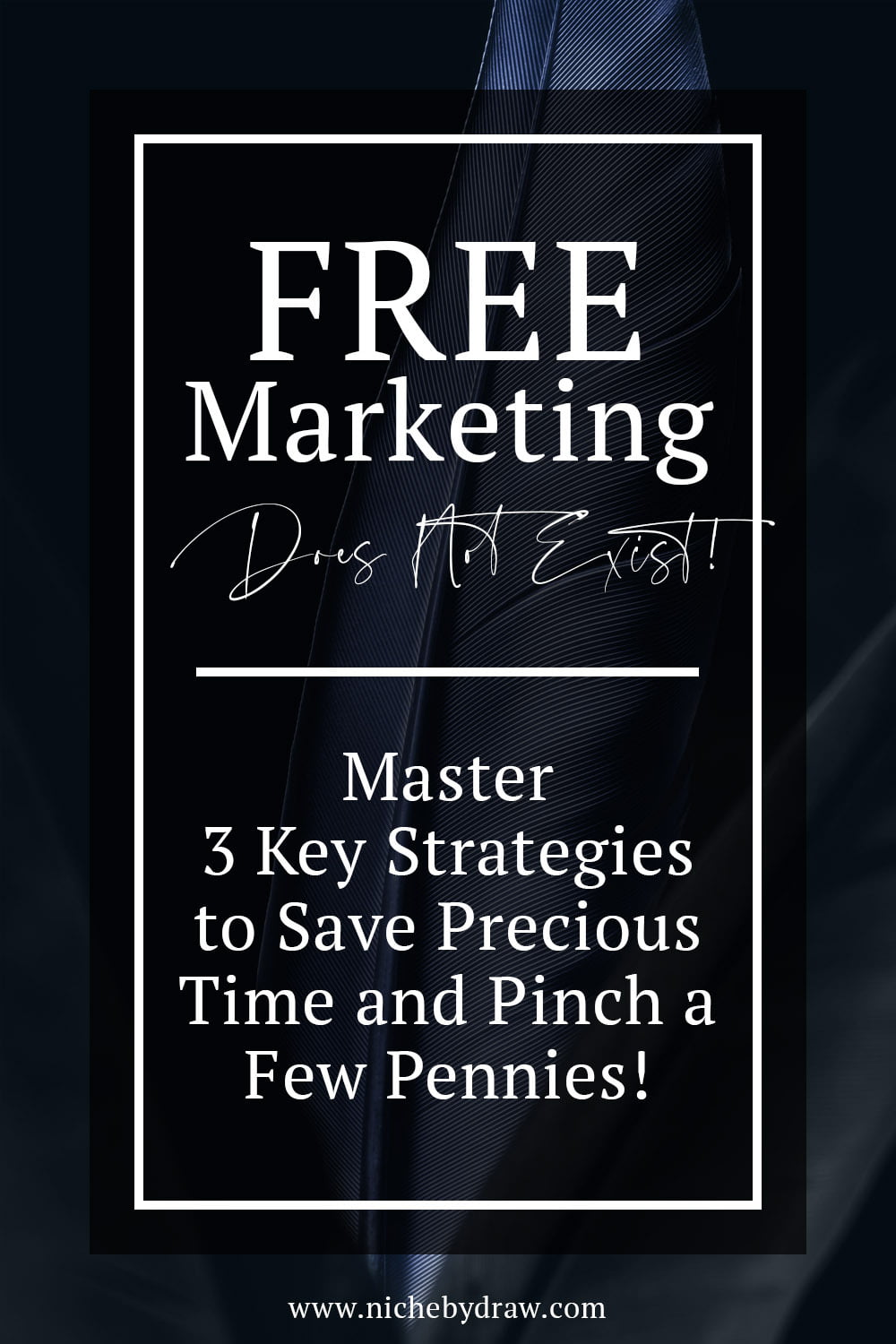Master these key strategies to save precious time and pinch a few pennies!
How much should you be spending on marketing?
How do you know your investment will yield a return?
Do you really need social media, email, and lots of content?
What is the cheapest/quickest way to get a return on my investment?
There comes a time during the entrepreneurial journey when these questions present themselves. Like every modern-day individual, we flock to Google and read handfuls of articles, blogs, and trend reports feeding us "free marketing" tips and "average budget" recommendations. Let’s take a minute and summarize some of these stats:
Here’s 7 “Free” Ways to Promote Your Business Online
- Use local listing services like Google and Yelp.
- Start social media accounts.
- Start a blog.
- Post media on YouTube.
- Implement SEO on your website.
- Publish regular press releases.
- Join an online community.
This sounds easy enough, right? How about marketing budget recommendations – let’s take a look at the latest stats for 2020 on advertising spend:
- The U.S. Small Business Administration recommends spending 7 to 8% of your gross revenue for marketing and advertising if you’re doing less than $5 million a year in sales.
- According to the Wasp Barcode Small Business Report, 42% of small businesses invest 3% or less of their revenue into marketing.
- Digital marketing budgets averaged 42% of the overall marketing ad spend in 2019, that’s expected to jump to 45% in 2020.
- Taking the lead in the digital marketing category is video marketing on channels like YouTube. That’s double what it was from 2016 to 2021.
- On average, social media ads will get 25% of the digital marketing budget in 2020.
Do you feel enlightened? We feel enlightened. The information inspires us to dive into implementation and troubleshoot our way out. Spending countless hours learning the “ins and outs” of SEO and how to schedule social media posts is exactly how we plan to spend our work week. (Not!)
Here’s the thing, Google can feed us tons of information, tips, stats, etc., but when it comes to executing these “free strategies” the cost is expensive -- your time.
Fundamentally, marketing is storytelling. In the words of Seth Godin, ‘it is the story of your product, built into your product. The ad might be part of it, the copy might be part of it, but mostly, your product and your service and your people are all part of the story.’ What does he mean by this? In simple terms, marketing your business requires the full experience. There is no shortcut to getting this right.
Where do you start, you ask?
Every business starts with an idea. You’ve developed a product, a service, a community, or some ground-breaking contribution to society. That’s the initial stage. As you work tirelessly to develop and bring this idea to fruition, you are building the consumer experience. Here’s the key – consistency. If we could give you only one piece of advice as you move forward, it would be the importance of discipline and consistent deliberate action. Now, that is a deep topic for another post, so let us dive into the three main strategies you can implement to make the most out of your marketing efforts.

Let's get started...
Define Your Business Experience
Mastering the business experience may seem like the most basic strategy, however, it is also the most overlooked detail for most business startups. You can develop an iconic product, but poor customer service will destroy your sales potential. Your technology could transform society, but your written communication is difficult to understand. You may deliver incredible customized service to your clients, but your online presence is nonexistent. Do you see how this may pose a problem?
Satisfied and delighted clients can be your business’s best marketing tool. Period. Taking the time to define your business experience can maximize word-of-mouth marketing, and the best part is it’s free.
What is included in the business experience, you say? In the simplest terms, it’s every interaction between your brand and your target audience. This includes, but is not limited to your website, social media profiles, customer service emails, marketing emails, advertisements, phone conversations, packaging, shipping and delivery, returns and exchanges, business services, product quality, product usefulness and the list goes on.
This may seem like a lot to digest but remember the key – consistency. There’s no better individual to define what your business represents and how it makes your customers feel than you. Taking the time to answer these two main questions is exactly how you define your business experience. They create the structure to benchmark your decisions. If you position your brand in such a way to connect with your customers on an emotional level, you will ace the business experience every time and they will do the marketing for you. Next…
Identify Your Communication Channels
Now that we’ve taken the time to define who we are and how we want to treat our customers, we must determine which communication channels to use. The goal is to focus on strategic channels, not every channel but the right channels for your brand to reach and resonate with your target audience.
Technically, communication channels are identified as any medium through which a message is transmitted to its intended audience. This includes television, radio, print media, press releases, emails, newsletters, social media posts, videos, podcasts, forums and the list goes on. Identifying your communication channels may require critical evaluation of your business, and determining which channels align best for both your offering and future goals.
Is your product, service, or branding highly visual? Instagram is probably the best for images, videos, and promotions. Is your goal to create an interactive community? Facebook, YouTube and relevant forums could serve these needs best. Are you trying to reach a vast audience, engage in conversations, and position yourself as a thought leader? Twitter might be perfect for this, along with a podcast. While focusing on your needs is key, it is important to consider the demographics of your target audience and take note of which platforms are the best match.
We want to take a moment here and share a quick note about social media channels.
Social media is not just a tool to gain exposure—it has now become a necessary time investment for every business. However, social media marketing does not have to be paid to be effective: it just has to be well-planned. The goal is to provide your followers with content that is useful, interesting and shareable to increase your followers without wasting precious time. Content reach takes effort. Paid, earned, shared and owned channels must work together to spread your message outside your immediate reach. This brings us to the final key strategy…
Deliver a Cohesive Message
Ok, so we have defined our business. Check! Selected the right channels to talk to our audience. Check! Now we just need to unify our brand content to deliver a cohesive and consistent message across all channels. Easy enough right?
Brand content is defined as any audience-facing media, both visual and written, that represents the business and delivers a message. While content requires time and energy to develop and disperse, no marketing strategy is complete without it.
It is important to note here that this is not about throwing information out there to see what sticks. Creating a cohesive message strategy for your business is key, along with (you guessed it!) consistent posting and sharing. When you are just starting out, it is important to set a schedule that is realistic and doable. Setting the right expectations for your audience is part of the business experience and will support the success of your marketing efforts.
There are tons of articles recommending how many times to post, when to post, where to post, and how to post. These are great – if all you’re doing is managing your media schedule. Take a beat. Evaluate what is best for you and your business, then do that. There are so many tools to help with scheduling, designing, trend forecasting, etc. – we will cover these in another post. For right now, make sure your plan is set up for success to deliver quality content with the perfect message through the right channels. That is where to start.
An important note to remember, content is about creating value first and should be a place for you to share your expertise. Determine what that is, the best way to share it, and go from there.
That being said, there are affordable methods to market your business, but establishing this foundation first will help you make the most of your advertising spend and support a stronger return. Mastering these 3 key strategies will help you build that foundation, allowing you to get creative and focus on adding value through your own voice and expertise within your industry – the ultimate win.
Here at The Niche, we love to see our fellow entrepreneurs win!
Thank you for taking the time to tune in and please comment below, share your thoughts, and join the conversation.

